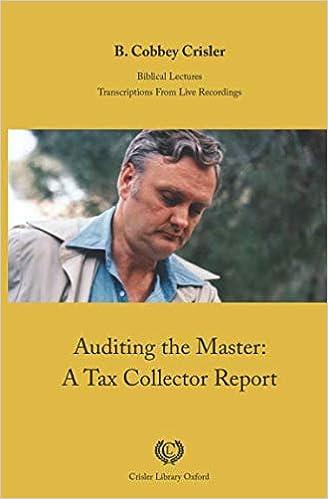Answered step by step
Verified Expert Solution
Question
1 Approved Answer
Please bold the answer, thank you Scenario: You are 30 years old with a gross annual income of $55,000. You are married with 2-year-old twin


Please bold the answer, thank you
Scenario: You are 30 years old with a gross annual income of $55,000. You are married with 2-year-old twin children. Your spouse is 30 years of age. You estimate that your final expenses for funeral, burial, and other expenses will be $15,000. You currently owe $185,000 on a mortgage, $25,000 on a car loan, and $20,000 in credit card debt. You would like to replace your income for 30 years, and believe that your insurance proceeds can be invested to earn a 5% return. You would also like a minimum of $60,000 for each child be placed in a college fund. You do not anticipate a need to fund a readjustment period for your spouse. You currently have a $80,000 whole life insurance policy. Two procedures may be used to estimate your life insurance requirements. The more accurate method is the multiple-of-earnings approach It is considered the better method because it: O offers a simplified way of evaluating your potential level of need. O considers all of the factors that might affect your potential level of need. Which of the following are potential financial resources that could be used to offset your family's costs and expenses after your death? Check all that apply. Government benefits, including Social Security survivors' benefits. The sale of physical assets, such as a house or a vehicle. Existing financial assets, including your savings, investment, and retirement accounts. Health insurance benefits Now, think more about the needs-based approach to estimating your life insurance requirements. To perform this analysis, make the following assumptions and computations: When calculating your replacement income, you should base your computation on of your current annual income. This is because: O it is the maximum amount that life insurance is permitted to pay. O it is generally estimated that 25% of income is used for personal needs, and your needs won't need to be paid anymore. O according to the insurance regulators, surviving spouses don't deserve 100% of their spouses' annual income. Therefore, your replacement-income requirement should be based on a base annual income of per year. These expected future amounts should be at a rate of for years. This produces a total estimated replacement income of (Hint: The appropriate annuity interest factor is 15.3725.) Another important element in the needs-based method involves your spouse's and family's readjustment-period needs. This item is intended to cover the costs of and any education expenses incurred by your spouse and dependents. Your readjustment-period needs are currently expected to be Your current short term debt-repayment needs are and reflect the costs of your Scenario: You are 30 years old with a gross annual income of $55,000. You are married with 2-year-old twin children. Your spouse is 30 years of age. You estimate that your final expenses for funeral, burial, and other expenses will be $15,000. You currently owe $185,000 on a mortgage, $25,000 on a car loan, and $20,000 in credit card debt. You would like to replace your income for 30 years, and believe that your insurance proceeds can be invested to earn a 5% return. You would also like a minimum of $60,000 for each child be placed in a college fund. You do not anticipate a need to fund a readjustment period for your spouse. You currently have a $80,000 whole life insurance policy. Two procedures may be used to estimate your life insurance requirements. The more accurate method is the multiple-of-earnings approach It is considered the better method because it: O offers a simplified way of evaluating your potential level of need. O considers all of the factors that might affect your potential level of need. Which of the following are potential financial resources that could be used to offset your family's costs and expenses after your death? Check all that apply. Government benefits, including Social Security survivors' benefits. The sale of physical assets, such as a house or a vehicle. Existing financial assets, including your savings, investment, and retirement accounts. Health insurance benefits Now, think more about the needs-based approach to estimating your life insurance requirements. To perform this analysis, make the following assumptions and computations: When calculating your replacement income, you should base your computation on of your current annual income. This is because: O it is the maximum amount that life insurance is permitted to pay. O it is generally estimated that 25% of income is used for personal needs, and your needs won't need to be paid anymore. O according to the insurance regulators, surviving spouses don't deserve 100% of their spouses' annual income. Therefore, your replacement-income requirement should be based on a base annual income of per year. These expected future amounts should be at a rate of for years. This produces a total estimated replacement income of (Hint: The appropriate annuity interest factor is 15.3725.) Another important element in the needs-based method involves your spouse's and family's readjustment-period needs. This item is intended to cover the costs of and any education expenses incurred by your spouse and dependents. Your readjustment-period needs are currently expected to be Your current short term debt-repayment needs are and reflect the costs of yourStep by Step Solution
There are 3 Steps involved in it
Step: 1

Get Instant Access to Expert-Tailored Solutions
See step-by-step solutions with expert insights and AI powered tools for academic success
Step: 2

Step: 3

Ace Your Homework with AI
Get the answers you need in no time with our AI-driven, step-by-step assistance
Get Started


